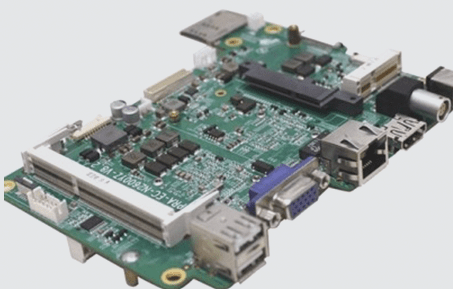1. The basic process of the photo-coating layer for FPC circuit boards is similar to that for rigid printed boards.
2. The materials used include both dry film type and liquid ink type.
3. However, the solder mask dry film differs from liquid ink.
4. Although the coating processes for dry film and liquid ink are distinct, the same device can be employed for exposure and subsequent steps.
5. Naturally, the specific process conditions will vary.
6. The dry film must be applied first, covering all the circuit diagrams.
7. Ordinary dry film methods can lead to air bubbles between the lines, so a vacuum laminating machine is used.
8. The ink type involves using screen printing or spraying methods to apply ink onto the circuit pattern.
9. Screen printing is a widely used method, similar to the process for rigid printed boards.
10. However, ink applied through screen printing is generally thin, about 10–15µm, due to the circuit’s geometry.

1. Orientation: the thickness of the ink in a single print is not uniform, and skipping in printing may occur. To improve reliability, adjust the direction of the missing print and then perform a second print.
2. Spraying is a relatively new technology in printed board processing. The nozzle adjusts the spraying thickness over a wide range, ensuring uniform coating with minimal uncoated areas and continuous application suitable for mass production.
3. Screen printing ink consists of epoxy resin and polyimide, both two-component systems. They must be mixed with a curing agent before use and solvent added to adjust viscosity as needed. Post-printing requires drying.
4. Double-sided lines can be illuminated. After temporarily drying one side, coat the other side, temporarily dry it, then proceed with curing after exposure and development.
5. The photocoating layer’s pattern exposure needs a positioning mechanism with high accuracy. For a disk size of about 100 µm, the cover layer’s positional accuracy should be within 30-40 µm. Achieving this precision depends on the mechanical capabilities of the device. However, meeting these high standards becomes challenging due to size expansion or partial deformation of the flexible printed circuit board after multiple processing steps.
6. No major issues arise during development. Precise graphics require careful attention to development conditions. Both the developer and resist pattern developer are sodium carbonate aqueous solutions. Even in small FPC production runs, avoid using the same developer for pattern development. Post-curing is necessary to fully cure the photocoating layer resin, with curing temperatures varying by resin type, typically requiring 20-30 minutes in an oven.
2. The materials used include both dry film type and liquid ink type.
3. However, the solder mask dry film differs from liquid ink.
4. Although the coating processes for dry film and liquid ink are distinct, the same device can be employed for exposure and subsequent steps.
5. Naturally, the specific process conditions will vary.
6. The dry film must be applied first, covering all the circuit diagrams.
7. Ordinary dry film methods can lead to air bubbles between the lines, so a vacuum laminating machine is used.
8. The ink type involves using screen printing or spraying methods to apply ink onto the circuit pattern.
9. Screen printing is a widely used method, similar to the process for rigid printed boards.
10. However, ink applied through screen printing is generally thin, about 10–15µm, due to the circuit’s geometry.

1. Orientation: the thickness of the ink in a single print is not uniform, and skipping in printing may occur. To improve reliability, adjust the direction of the missing print and then perform a second print.
2. Spraying is a relatively new technology in printed board processing. The nozzle adjusts the spraying thickness over a wide range, ensuring uniform coating with minimal uncoated areas and continuous application suitable for mass production.
3. Screen printing ink consists of epoxy resin and polyimide, both two-component systems. They must be mixed with a curing agent before use and solvent added to adjust viscosity as needed. Post-printing requires drying.
4. Double-sided lines can be illuminated. After temporarily drying one side, coat the other side, temporarily dry it, then proceed with curing after exposure and development.
5. The photocoating layer’s pattern exposure needs a positioning mechanism with high accuracy. For a disk size of about 100 µm, the cover layer’s positional accuracy should be within 30-40 µm. Achieving this precision depends on the mechanical capabilities of the device. However, meeting these high standards becomes challenging due to size expansion or partial deformation of the flexible printed circuit board after multiple processing steps.
6. No major issues arise during development. Precise graphics require careful attention to development conditions. Both the developer and resist pattern developer are sodium carbonate aqueous solutions. Even in small FPC production runs, avoid using the same developer for pattern development. Post-curing is necessary to fully cure the photocoating layer resin, with curing temperatures varying by resin type, typically requiring 20-30 minutes in an oven.


